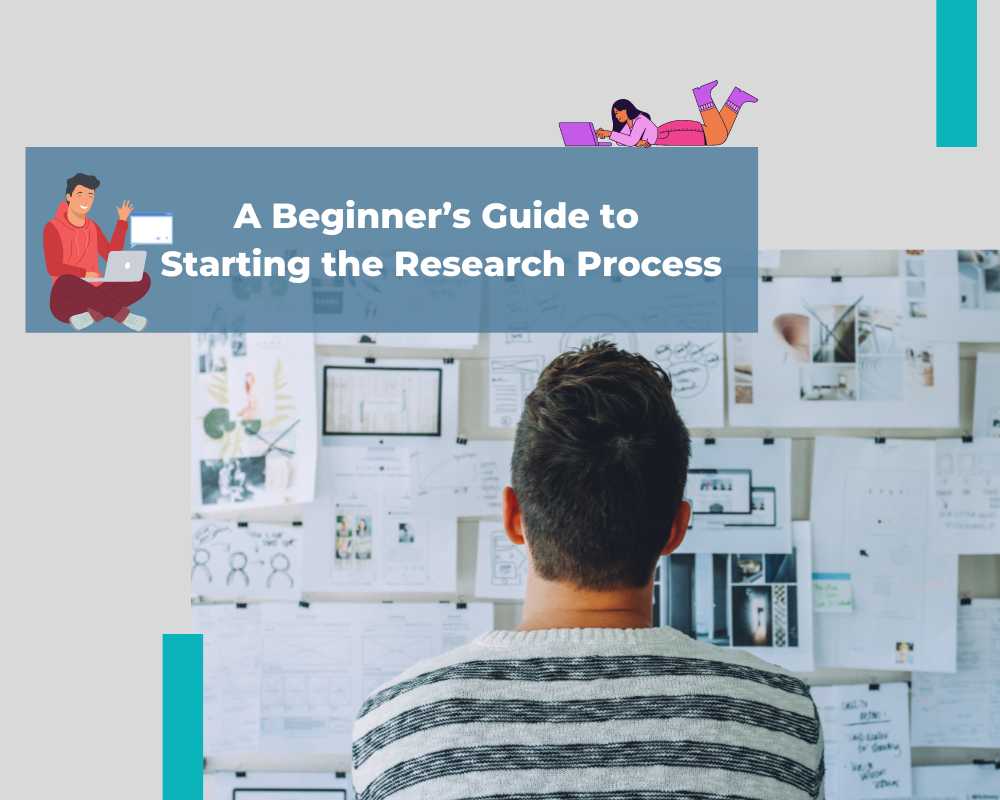
It might be challenging to know where to start while writing a thesis or dissertation, but there are certain obvious steps you can take.
A very general concept about a subject you’re interested in learning more about is frequently the starting point for study. To find a problem, you conduct some initial study. A proposal that summarizes your thoughts and plans can be created once you have refined your research questions and laid the groundwork for your study strategy.
To help you focus your thoughts and lay a solid groundwork for your research project, this article walks you through the initial stages of the research process. An easy-to-use research paper writing process is outlined in the steps that follow. You may need to reorder these stages depending on your expertise with the subject and the difficulties you run into.
Table of Contents
Step 1: Select Your Topic
Selecting a topic is the most challenging part, you must first think about some fresh and relevant concepts. Consider your overall area of interest or field of study. You may already have particular research interests based on classes you’ve attended, or you may have had to think about your topic when going to graduate school and composing a statement of purpose.
- Even if you already have a strong understanding of your subject, you should read broadly to gain background information and start to focus your views.
- To start assembling pertinent sources, conduct a preliminary literature review.
- Make notes while you read and try to spot issues, doubts, discussions, inconsistencies, and holes.
- Your goal is to focus from a broad area of interest on a single thing.
- Be sure to take into account the practical aspects, such as your program’s needs, the time allotted for you to finish the research, and the accessibility of relevant sources and data.
It’s a beneficial idea to discuss the subject with your project advisor before moving on to the next step.
Step 2: Do the Groundwork Search to Gather Information
Make a preliminary search before starting up your research work to see if there is sufficient information available to meet your needs and to establish the context of your study. Look up your keywords in the proper encyclopedias and dictionaries in the library’s Reference section as well as in other places including book catalogs, internet search engines, and periodical databases. Your textbooks, lecture notes, and reserved readings may contain more background information. Depending on the resources at your disposal, you might need to change the topic’s primary focus.
Step 3: Determine a Challenge
You’ve chosen a topic and identified a region, but what will your study look into and why is it important? You must specify a research problem for your project to give it direction and purpose.
A method or technique that isn’t working properly, a weak spot in an organization’s operations, or a challenge experienced by a certain group of individuals in society are a few examples of practical problems that could be the source of the issue.
You can create a problem statement to frame the issue and establish your goals. This outlines the problem, who it impacts, why the study is necessary, and how your project will help to solve it.
As an alternative, you can decide to look into a theoretical issue, such as an understudied phenomenon or relationship, a discrepancy between two models or theories, or an ongoing disagreement among academics.
Step 4: Make Up Research Questions
The next step is to formulate one or more research questions based on the problem definition. These are aimed directly at the information you seek. They may concentrate on describing, contrasting, assessing, or elaborating on the study problem.
Using the right qualitative or quantitative research techniques, a strong research question should be detailed enough to allow for a complete response. Additionally, it should be difficult enough to research, analyze, and argue thoroughly. A thesis or dissertation should not be written about questions that may be answered using readily available facts. You might need to create a conceptual framework and empirical hypotheses at this point in some study types.
Step 5: Make a Research Plan
A useful framework for addressing your research issues is provided by the study design. It entails selecting choices regarding the data types you’ll require, the techniques you’ll employ to gather and evaluate them, as well as the venue and duration of your study. There are frequently numerous ways you can approach finding the answers to your inquiries. Your priorities will influence some of your decisions. Do you want to identify causes and effects, make generalizations, or comprehend the specifics of a given setting, for instance?
Whether you’ll employ primary or secondary data, qualitative or quantitative techniques, is something you need to decide. As well as deciding on your selection criteria for participants or sources, you also need to decide on the precise tools, processes, and materials you’ll employ to gather and evaluate your data.
Step 6: Make a Proposal for the Study
After finishing these procedures, you are finally prepared to finish a research proposal. The relevance, context, aim, and plan of your research are described in the proposal. The proposal should detail the context, the issue statement, and the research questions in addition to a literature evaluation that demonstrates how your project will complement prior research on the subject. The study design section outlines your strategy and provides detailed instructions for what you will accomplish.
The proposal will serve as a roadmap for writing your thesis or dissertation and may need to be approved by your advisor before you begin.
Step 7: Proofreading
Proofreading the paper you’ve written is the process’ last phase. Check the material for spelling, grammatical, and punctuation mistakes as you read it. Ensure that the sources you used are properly cited. Ensure that you have clearly defined the point you wish to make to the reader.






